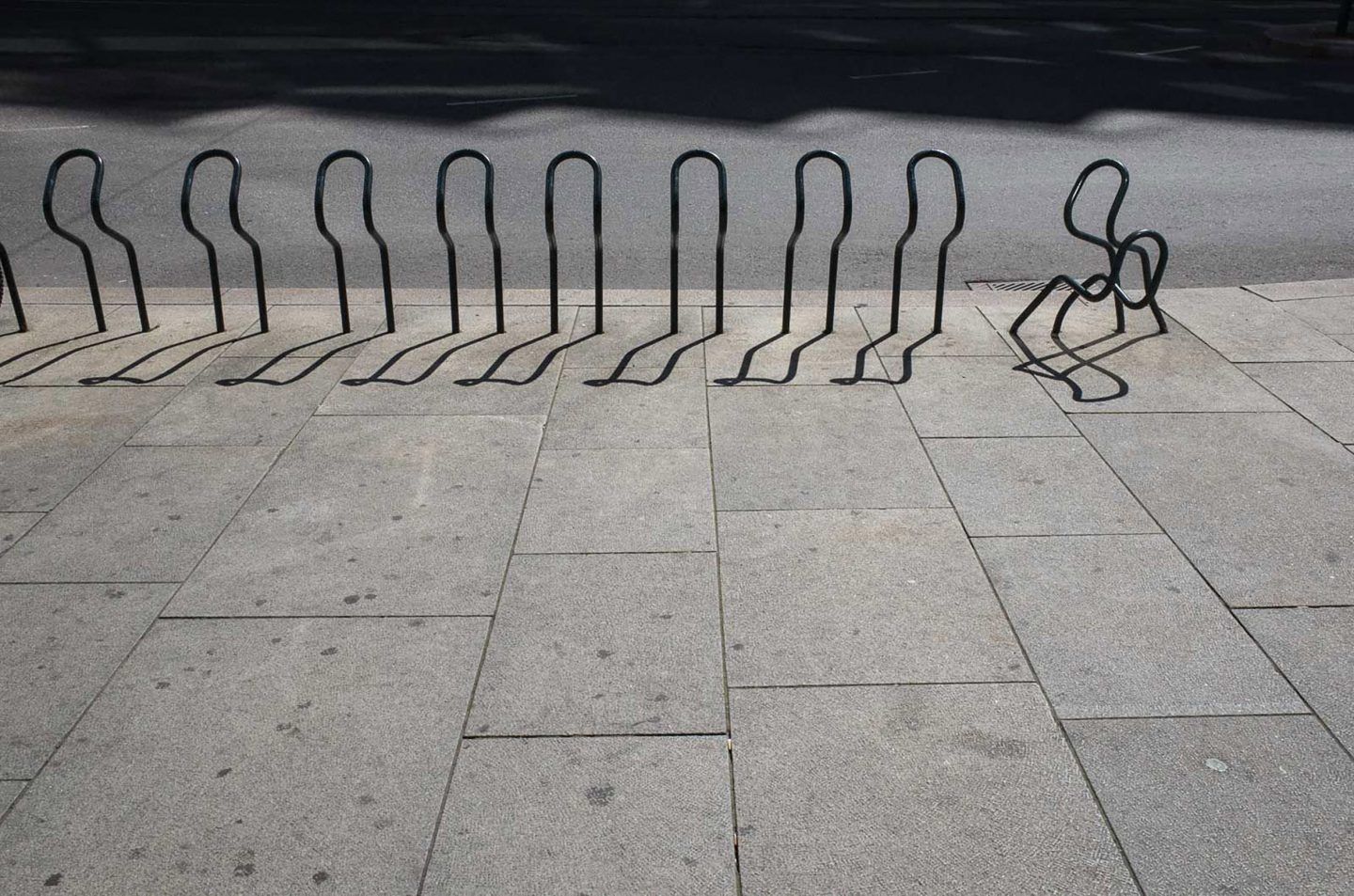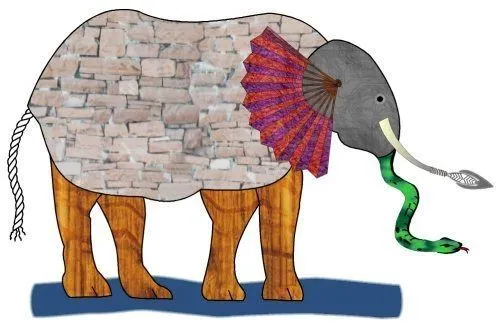Making Strangers With the World
The question I’m holding is how can we stop switching off automatically from everyday familiar contexts? How can we blaze our world up again?

Hacks to see the familiar with fresh eyes.
Funny, I never noticed that before…
Imagine your friend is visiting you from out of town, and you take her to explore the local places you love most. This time you notice some new things. Perhaps a quirky tree, a curious engraving, or an unusual door. “Funny, I never noticed that before…” you muse, wondering how you could have missed it.
This happens to me all the time. I miss the world making itself available to be observed, especially if I’m in a familiar place
Why does this happen?
The simple explanation is that when we see the same things repeatedly, our brain switches off. It’s a mental automation process to conserve energy.
From a survival perspective, once we know our way around, we no longer need to look as intensely for food or potential danger. In this relaxed state of familiarity, our minds can attend to other things.
By ignoring irrelevant information, we free up the mind. We can switch off from what we see and switch on to other thoughts. We can plan our to-do lists, or reflect on a difficult conversation we had. Super useful.
Good reasons to pay attention
I know a lot of parents who complain about not being able to be fully present with their children, despite carving out the time. This is an example of a situation where we really want to pay attention to the world in front of us, but we can’t stop thinking.
We also know (from collective experience, and research) that spending too much time in our heads running through unnecessary, repetitive or negative thoughts can leave us feeling tired, bored, resentful, or worse. The churning of thoughts can grey out our experience of life.
We could also be missing out on important information. We only notice that which we think is relevant to us right now, but what if (think Sherlock) we get it wrong, and walk right past the answer?
The world is full of obvious things which nobody by any chance ever observes.”
— Sherlock Holmes

Choosing to take a long deep look
Automatic processes, like breathing, just happen in the background without our awareness. But when it comes to breathing, we can intervene. We can choose to take a long deep breath.
Similarly, there must be a way to pause and take a long deep look, when we want to be present to our visual experience as it unfolds.
This awareness is also known as mindfulness. Psychologist Darcia Narvaez, in her paper about moral neuroeducation, defines mindfulness as follow:
It means pulling oneself out of automatic responses to familiar contexts and paying attention to the newness in the situation.”
Attention hacks
The question I’m holding is how can we stop switching off automatically from everyday familiar contexts? How can we blaze our world up again?
Many of us find this happens naturally when we have a camera in our hands, hence my love for photography as a tool for mindfulness.
By examining the mechanisms at work behind this phenomenon, we can hack our own attention further, and shift our perception of the world.

Hack #1: Forget the name
To see we must forget the name of the thing we are looking at.”
— Claude Monet
There is something primordial about experiencing without naming.
Our environment is filled with objects. If each was treated as unique, this complexity would quickly become overwhelming. Therefore, as babies, we begin to construct categories that capture similarities among objects and to learn words that express these categories.
The downside of this amazing development is that we also get less curious. We name, label, evaluate, and react based on our past conditioning. Children have a wonder about simple objects like stones and spoons, which as adults we struggle to replicate. “Ah yes, a spoon.” we register as we move swiftly on.
What would happen if we looked at something without thinking about its name or function? Like a child, not knowing yet what a thing is, we could become fully absorbed by it.
Improvisation artist Keith Johnstone describes this process as attending to an image without verbalising about it. In his guidebook Impro he explains:
“I learned to ‘hold the mind still’ like a hunter waiting in a forest.”

Hack #2: Adopt a beginner’s mind
In Zen teachings, there is a coveted state known as the beginner’s mind, which is similar to the fresh, uncluttered mind of a baby. The beginner is humble and open-minded, looking carefully but not sure what to expect.
In contrast, an expert looks for specific patterns that he’s seen before. The downside to the expert’s experience is that, blinded by expectations, she can fail to notice anything that doesn’t fit into her theories and frameworks.
“In the beginner’s mind there are many possibilities, but in the expert’s there are few.”
In the inspiring classic 1962 book, The Structure of Scientific Revolutions,Thomas Kuhn explained how “fundamental inventions of a new paradigm have either been very young or very new to the field whose paradigm they change.” When it comes to innovation, we can be disabled by experience and expertise. As the old adage goes, only the empty cup can be filled.

Hack #3: Treat it as art
There is an artistic technique of defamiliarisation known as “ostranenie.” The aim of this technique is to force an audience to see common things in an unfamiliar or strange way. It literally means “making it strange”.
Throughout history, artists have attempted to do this in different ways. Marcel Duchamp, who is considered the father of conceptual art, recontextualised everyday objects to be culturally treated as art. By placing them in a glass box in a museum, they look less familiar!
While not all art historians agree on the urinal exhibit (see image below) being high-quality art, this treatment certainly did get a lot of people to look closely at something we don’t normally.
You can try this approach yourself with your camera. Take something you would normally gloss over, and make it your subject. Now make a portrait of it. Imagine it is going to be displayed in a gallery. To create the image you will need to place it the centre of your attention for a while. Think about how to frame it, and what important features to highlight.

Hack #4: Find a different angle
This can be taken quite literally. Try looking at something in front of you from a different angle. You can look down, taking a bird’s-eye view. You can look at ground level, taking a worm’s-eye view (yes, I know worms don’t have eyes but you get the idea!). You can look from the subject’s eye level, evoking empathy. You can look sideways. You can even look upside down.
A wonderful book to help with this is: The New Drawing on the Right Side of the Brain, by Betty Edwards. Some of the first exercises are to free hand copy a line drawing, while the picture you are copying is upside down.
The theory behind this is that by looking upside down, the symbol-interpreting portion of the brain doesn’t exert as much influence on the drawing. It is surprising to see the difference this simple shift can make.

Hack #5: Look for longer than you think
Boredom can stop us from discovering new things. There is an inspiring story of an astronomer, who risked his reputation by pointing the Hubble telescope to a patch of seeming nothingness in space, for 100 expensive hours. The result was a profound discovery, which I wrote about previously here.
Some artists and photographers limit themselves to creating images just in their home, garden, or in their neighbourhood for a certain length of time, perhaps as long as a few months or a year. This may sound incredibly boring and frustrating. But limitations can fuel creativity. In time, the most familiar sights might start looking unfamiliar.
“The technique of art is to make objects ‘unfamiliar,’ to make forms difficult to increase the difficulty and length of perception because the process of perception is an aesthetic end in itself and must be prolonged.”
— Shklovsky
Do you want to try it now? Simply look at the back of your hand for a one full minute. You may need to get a watch or put a timer on your phone. Be warned: after 5 seconds it might start getting boring, but if you persist beyond that feeling, you will no doubt be rewarded with a fresh perspective.

Hack #6: Walk with someone
Sometimes the best trick in the book is to ask a friend for help. Walking with someone who is attentive, or has a different idea of what’s relevant or interesting, will throw light on that which we haven’t seen before.
One of my favourite books based on this idea is: On Looking: Eleven Walks with Expert Eyes by Alexandra Horowitz. The author walks around her own block eleven times with different companions.
“Each of my companions on these walks serves to do the selective enhancing for us, highlighting the parts of the world that they see but which we have either learned to ignore or do not even know we can see.”
— Alexandra Horowitz

Perhaps your walking companion will be that tourist who is relishing every detail because it is her first time here. Perhaps a dog, who notices the broken things we never would. Perhaps a curious child, who is not yet jaded by familiarity and a wandering mind. Perhaps a social worker, who sees the suffering that most of us block out. Perhaps a quiet meditator, who connects with the sparkle of love in every stranger. Whoever it is, they might just show us a glimpse of a world that we hadn’t noticed.
Noticing – Our Newsletter
Join our newsletter community for monthly inspiration to slow down and stay curious about everyday life and what matters most to you.




